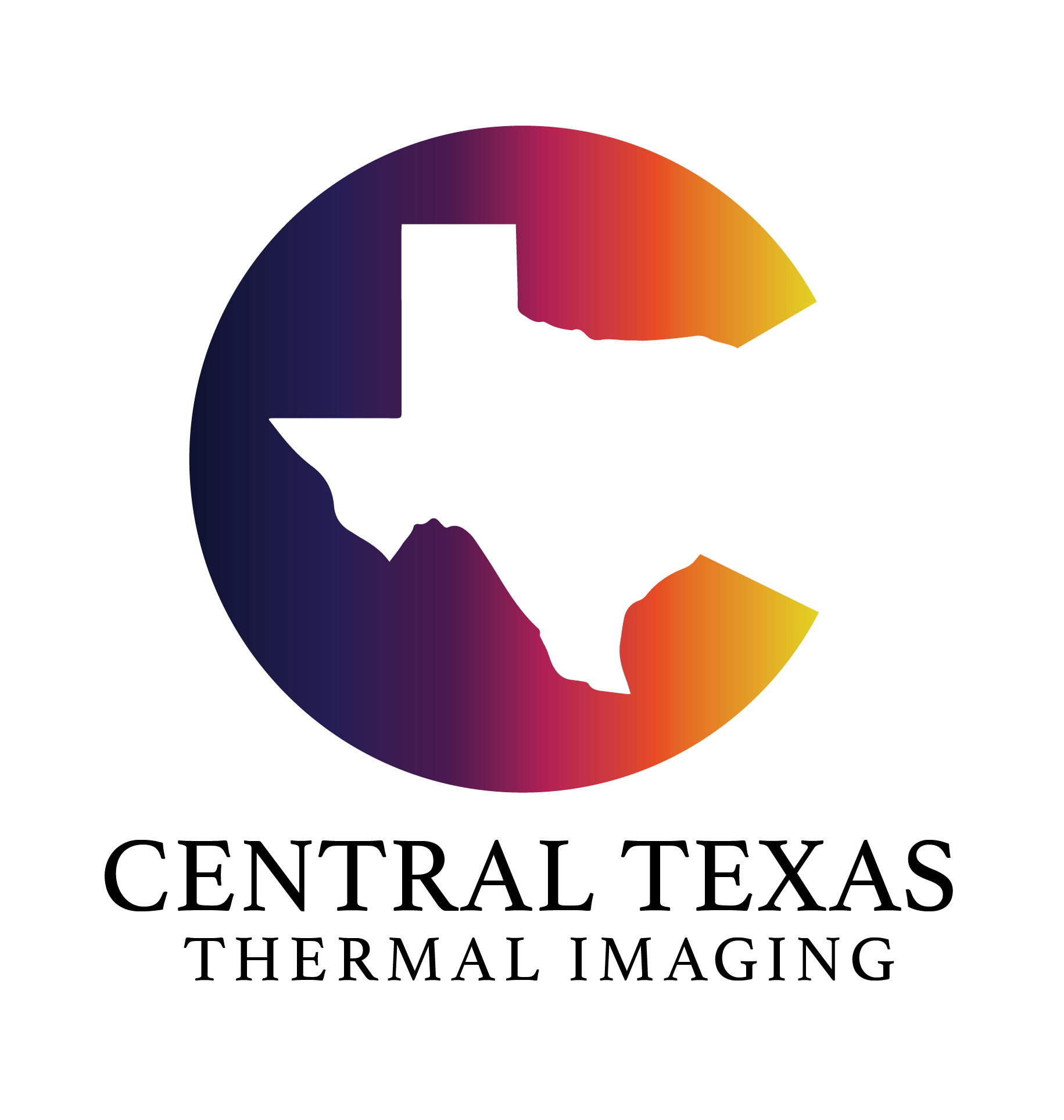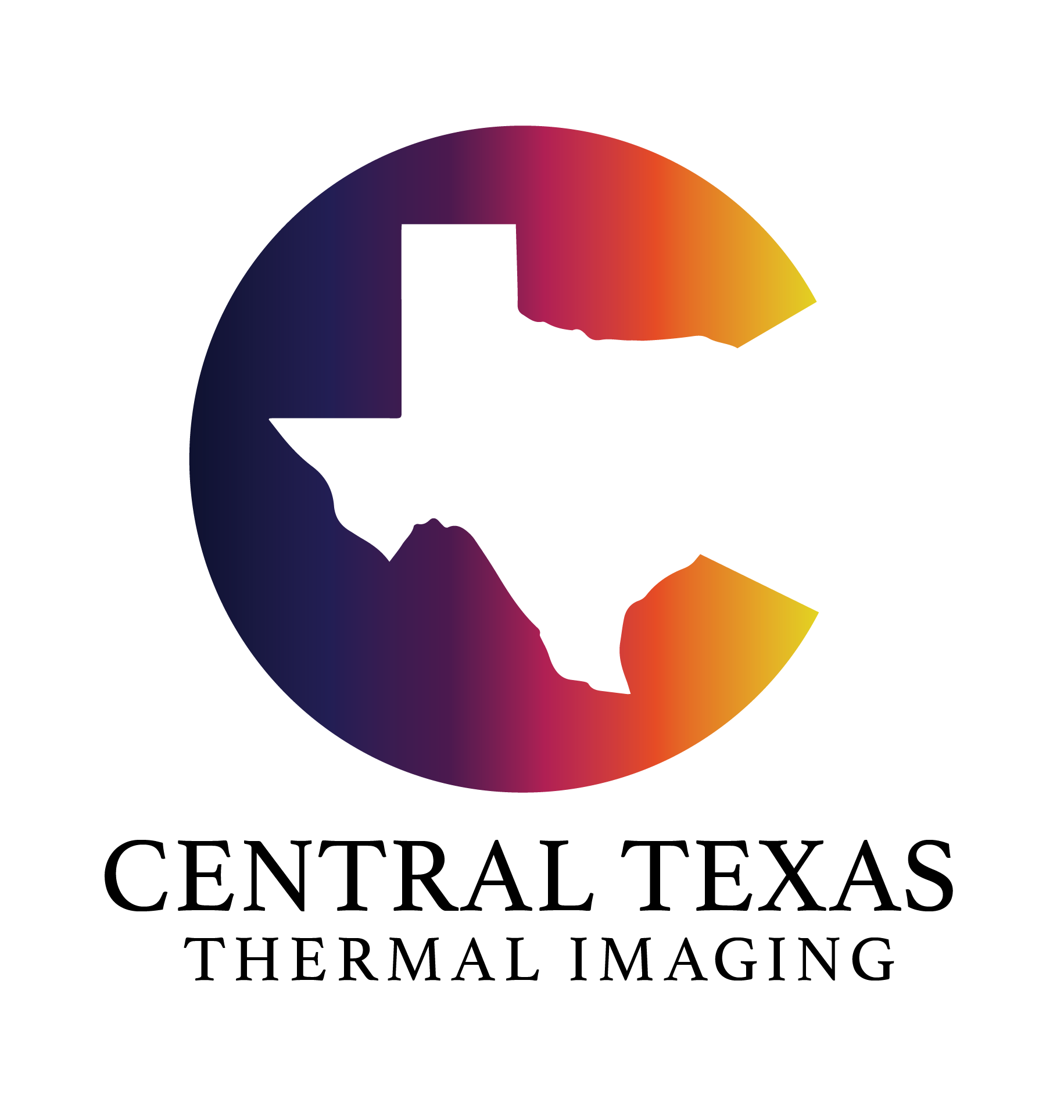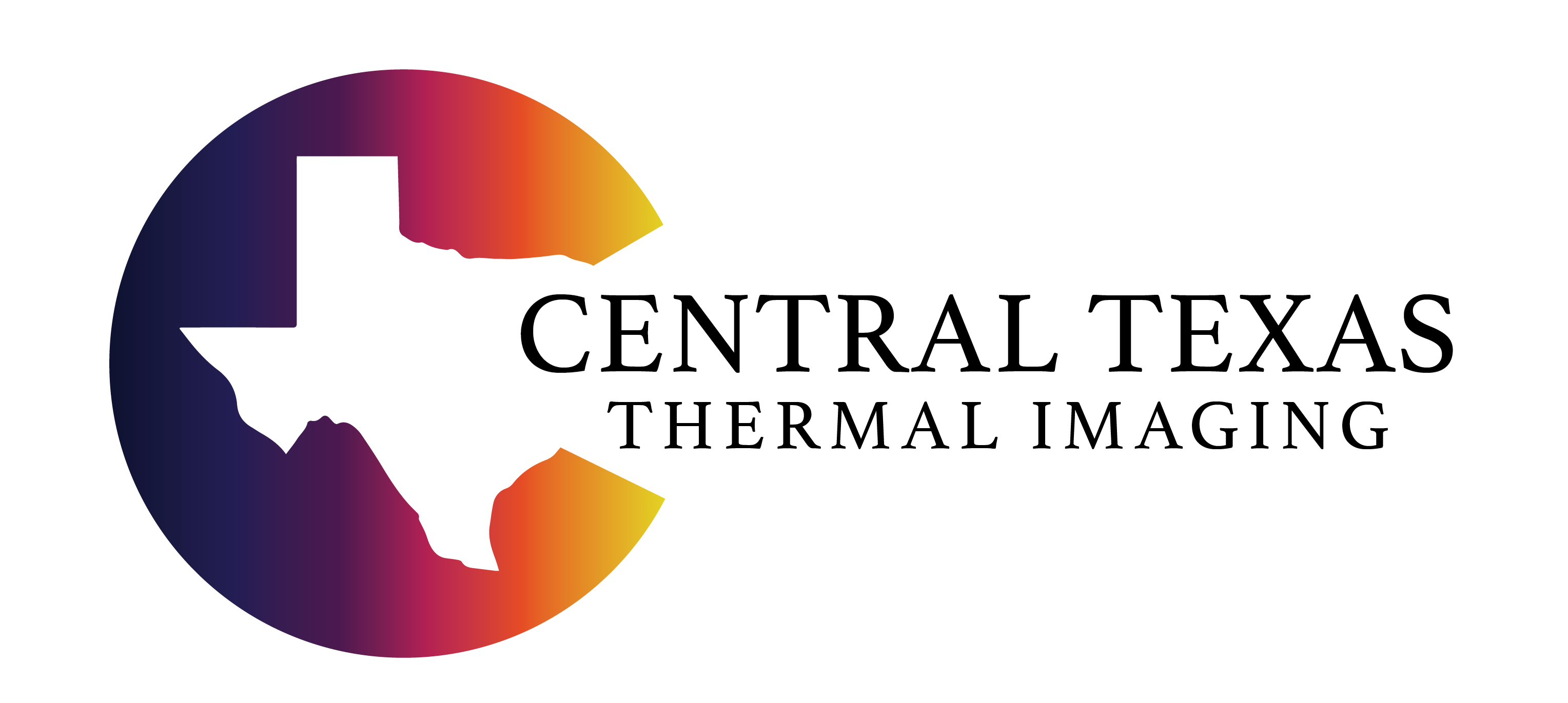Follow Us x
Aerial IR Surveying
Providing services in New Braunfels, Cedar Park, San Marcos & Austin, TX
Both visual and infrared images are used to do the analysis by overlaying the AutoCAD drawing of the roof 'over' the digitized photographs and thermographs. The drawings are created indicating areas of suspected moisture contamination. The result is a report where visual, infrared and AutoCAD Components are well-matched and lined up.
Infrared (IR) Imagery Explained
Thermal infrared (IR) imagery is imagery that shows heat. It is often in the form of a gray scale picture whose shades of gray indicate the differences in temperature and emissivity of objects in the image. Typically, objects in the image that look lighter are warmer and those that look darker are cooler. Bright white objects are the warmest in the images. Black objects are the coolest.
Any object with a temperature above absolute zero (0 Kelvin or -273 degrees Celsius) emits infrared radiation. An infrared picture only shows objects which emit infrared wavelengths in the 3000-5000 or 8000-14000 nanometer range. Objects in visible light wavelengths of 400 to 700 nanometers are detected, but only because they also emit heat. An example of this would be a warm street light that can be seen in the IR imagery, not because it emits light, but heat. We record infrared imagery onto a computer hard drive and may later create digital image files. These images may then be modified in a number of ways to enhance their value to the end-user, such as creating false-color images, stitching them together and/or creating mosaic images.
Understanding Infrared Roof Imagery
Areas of roof moisture contamination often manifest themselves as warmer (lighter colored) areas that may be nebulous in shape and sometimes mottled in appearance, although they are commonly found in linear or puddle-like shapes. The linear shapes many times follow low areas, drainage routes, roof edges and seams. Puddle-like round or oblong shapes often form around roof penetrations such as mechanical equipment, standpipes, vents and drains. The wet areas are lighter in color because the latent heat (from daylight sunshine) in the trapped water mass is greater than in the dry, functioning insulation or roof substrate. After sunset when the roof structure cools down, wet areas of roof insulation and other materials continue to radiate heat, allowing our sensitive infrared cameras to detect the sources of heat and record them for later analysis.



